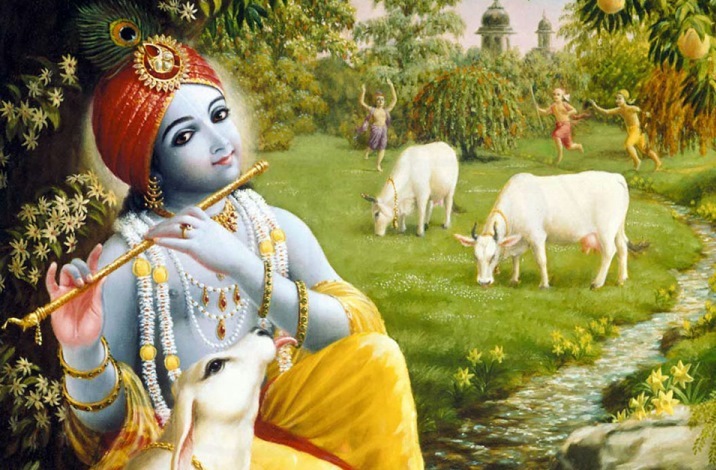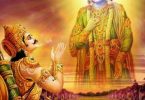Question: What are the “sixteen internal potencies” of the Lord? These are mentioned in the following two purports.
SB 3.3.21 purport says “The sixteen thousand cowherd damsels are a display of sixteen varieties of internal potencies. This will be more elaborately explained in the Tenth Canto. It is said there that Lord Krishna is just like the moon and the internal potential damsels are like the stars around the moon.” Also, SB 10.59.43 purport says: “At that place, sixteen thousand gopis were assembled with Krishna, who is considered the Supreme, the Supersoul, the shelter of all living beings. These gopis are His renowned sixteen potencies, O goddess.”
Answer by Romapada Swami:
Here are the references to understand this.
Laghu-bhägavatämåta 1.5.129
“Çré, Bhü, Kérti, Ilä, Lélä, Känti, Vidyä, Vimalä, Utkarñiëé, Jïänä, Kriyä, Yogä, Prahvé, Satyä, Içänä, and Anugrahä are (the Lord’s) sixteen principal potencies.”
BV’s Commentary:
The sixteen energies are described by the Vaiñëavas according to the scriptures. Bhakti-viveka and other works describe them as çaktis. The sixteen principle çaktis are çré, bhü, kérti, ilä, lélä, känti, vidhyä, (seven) and nine others starting with vimalä.
Vimalä and others will be listed in the description of Mahä-vaikuëöha. They are vimalä, utkarñiëé, jïänä, kriyä, yogä, prahvé, satyä, éçänä and anugrahä.
Laghu-bhägavatämåta 1.5.234
The Lord was seated on His throne and was surrounded by different energies like the four, the sixteen, the five, and the six natural opulences, along with other insignificant energies of the temporary character. But He was the factual Supreme Lord, enjoying His own abode. SB 2.9.17
BV’s COMMENTARY
He was situated on a royal throne (äsanam) worshipable by all (adhyarhanéya) surrounded by his energies. The four energies are hlädiné, kérti, karuëä and tuñöi. The sixteen are the seven – çré, bhü, kérti, élä, lélä, känti, vidyä, plus the nine – vimalä, utkarñiné, jïänä, kriyä, yogä, prahvé, satyä, éçänä, and anugrahä. The five are säìkhya (knowledge), yoga, vairägya, tapas (austerity), and bhakti. This makes twenty-five energies.
The commentary of Madhva on Çrémad-Bhägavatam mentions that the following sixteen spiritual energies are present in the spiritual world: (1) çré, (2) bhü, (3) lélä, (4) känti, (5) kérti, (6) tuñöi, (7) gér, (8) puñöi, (9) satyä (10) jïänäjïänä, (11) jayä utkarñiëé, (12) vimalä, (13) yogamäyä, (14) prahvé, (15) éçänä and (16) anugrahä.
In his commentary on the Laghu-bhägavatämåta, Çré Baladeva Vidyäbhüñaëa has said that the above energies are also known by nine names: (1) vimalä, (2) utkarñiëé (3) jïänä, (4) kriyä, (5) yogä, (6) prahvé, (7) satyä, (8) éçänä and (9) anugrahä.
In the Bhagavat-sandarbha of Çréla Jéva Gosvämé (text 117) they are described as çré, puñöi, gér, känti, kérti, tuñöi, ilä, jayä, vidyävidyä, mäyä, samvit, sandhiné, hlädiné, bhakti, mürti, vimalä, yogä, prahvé, éçänä, anugrahä, etc. All these energies act in different spheres of the Lord’s supremacy.
~~
See also Padma Puräëa 6.256.47-50 + Hari-bhakti-viläsa 6.19 commentary for similar lists.







